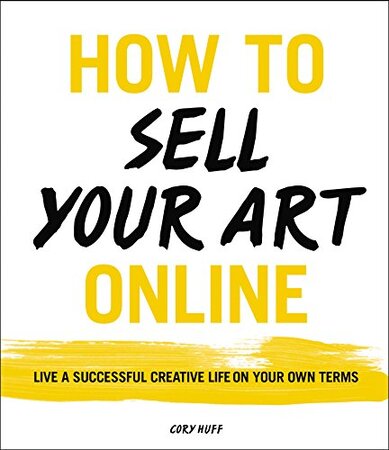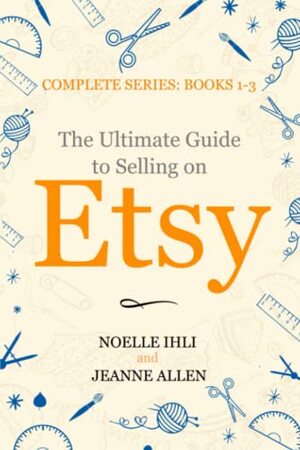Table of Contents
The cliché of the hungry artist is something you’ve probably heard about. And I’ll tell you why: because it is a myth in todays world. You can make a steady living as an artist nowadays without, literally, starving because of the internet. Keep reading if you’re an artist, designer, or creative type who wants to learn how to sell their work online and establish a sustainable revenue stream. If you are thinking of selling digital art online, this article will give you essential tips, from making digital files to setting up shop and licensing your work. We will also look into NFTs and how you can profit from them.
Statista reports that by 2021, the digital art industry has grown to an anticipated $13.3 billion in the United States. One may reasonably assume that the rising popularity of selling digital art online will persist.
So, if you are an artist, then now is the ideal time to follow the trend and start selling to:
- Influencers on social media platforms who are interested in press kits.
- Companies looking to rebrand their image from the past.
- Branding services for startups.
- Photographs sought by web designers.
- People interested in art, people who enjoy looking at art, and virtual art galleries.
- Additionally, there are other creatives and designers.
Is selling digital art profitable?
The simple answer is yes! The average artist can make from as small as $50 to six figures. According to Gallup, just 30% of economic decisions are based on logic, thus you don’t even need a huge audience to generate money. Gaining a customer’s loyalty is the key to financial success. With an enthusiastic fan base, success is practically assured. A further indication that art will always be in demand is the massive amount of digital art postings and successful artists on Instagram.
5 digital art products that artists are making money with
Let’s look at five different products to provide you some ideas and motivation for earning passive revenue.
emotes and bit badges for Twitch streams
Create emotes and bit badges for Twitch streams, some of which are for sale and others of which are available for free. Why not combine your interests and offer something that combines graphic design with gaming or streaming?
filters for social media platforms like instagram
You could find this enjoyable side hustle if you have the creative ability to make AR filters. Various artist sell Instagram filters to followers and other users for a profit.
graphic design resources or Branding kits
You could also consider selling custom artwork or graphic design assets like stock images, templates, icons, digital portraits, mockups and desktop backgrounds. To learn more about designing and creating this group of digital product you may read the following article.
Why Use Graphic Design Templates To Grow Your Business?
Where would you begin if you were tasked with creating an infographic for someone else? Certainly not with a blank sheet of paper or Google Doc to work with. You probably wouldn’t start from scratch; rather, you’d look for an infographic design template that you could utilize as a starting point or at least take inspiration from… Continue reading
Web fonts
The increasing attention is due to the importance of fonts in online branding. The time may be right for freelance graphic designers to cash in on the trend by selling unique typefaces.
Art prints or party decorations
Market researchers predict that the worldwide demand for home furnishings will increase by over 20% annually over the next few years. Use this to your advantage by offering digitally downloadable artwork for sale or as party supplies. For example digital art prints suitable for birthdays, baby showers, and other special occasions. People love buying digital arts which they can print and hang in their homes. This way they get to have an amazing art hanging in their homes for a very small cost.
Where to start?
You’ll need a website or a marketplace to market and sell your artwork online. Any marketplace that helps you launch and create your digital art is where you should start from. Using your own website for selling digital art is also a great option however you will need technical knowledge. You need to prepare your digital art files in the right format and size. Make sure they are high resolution files and provided in several different formats so users with various software can use them.
Selling on a marketplace vs your own website
Are marketplaces a good location to sell artwork, or should they be avoided? That’s the big dilemma many creators face when trying to decide where to list their work for sale online.
To increase their sales, some creators may list their works both on marketplaces and on their own websites.
But I wouldn’t advise doing that because you’ll only wind up paying more in fees. It’s important to minimise costs as much as possible while you’re just getting started.
For selling digital art there are two types of marketplaces where you can post your products. There are marketplaces like Etsy that allow all sort of products. The other type of marketplaces is the digital product specific marketplaces. These marketplaces are mainly (or only) focused on digital products. To learn more about the available marketplaces you may read the following article.
What is the best choice you can make? Should you build a website or use a marketplace. Looking at the benefits and drawbacks of each choice might help you decide.
The pros of selling on an online marketplace:
- An already established market
- Large customer base
- An international reach
- Effortless & quick setup
- Mobile-ready design
- Advanced VAT & tax settings
- Multiple payment options
- Customer support
- Available both for desktop and as App
- Piracy protection
The cons of selling on an online marketplace:
- Few marketing features are included out of the box
- Not much control over your product page design
- It’s really difficult to include third-party apps and services
- You have to pay a fee
- Payout lags
- Strict commercial regulations
- Little branding
Now, let’s look at the pros and cons of having your own website.
The pros of selling with your own website
- No selling fees
- Instant access to earnings
- Complete control over your own store design (Personalisation)
- Flexibility over marketing
- Control over Branding and data
- Direct contact with customers
The cons of selling with your own website:
- Building organic search traffic takes time
- No customer base (since it isn’t a marketplace)
- More complicated since you need to setup and run a full website (technical knowledge)
- You may need extra plugins (or integrations) like Paypal that cost fees
- Large initial investment
Charging money: how do you price digital art?
How much one can make from selling digital art? Since rates may vary so greatly from digital artist to digital artist, I’d say you have complete freedom of choice. Overall, though, the most successful price approach for art or any other digital product is one that is based on the product’s perceived worth. To explain, these are the reasons why:
- ResearchGate found that value-based pricing is the best method for artists to maximise their profits. With value-based pricing, you put a premium on excellence rather than quantity. As a result, you don’t base the price of your artwork on its production and distribution expenses, but on what it’s actually worth to the market.
- If you want to make more money in less time, you can price your artwork more than the going rate. That’s because many consumers believe that a greater price indicates a better product. However, if you want this technique to succeed, you must first persuade your consumers and make sure they fully grasp the value you are providing. The way to achieve this is to stress the originality and distinction of your work.
- Consider what sets your work apart from others? Compared to other artists, why should they purchase your work?
Licensing your art & why it matters
The question of how to legally distribute works of art is also crucial.
Here’s why it matters:
- The copyright ownership of your artwork will always remain with you as the artist, and this will be made explicit in any art licensing arrangement.
- It also gives the buyer the right to use the artwork for the stated purposes in the description.
Any questions or concerns about the proper usage of your artwork may be resolved with a well-thought-out licence agreement. Customers should be made aware in the agreement if the artwork is intended for:
- Personal use (e.g. using your artwork as a desktop wallpaper, etc.);
- Commercial use (e.g. distribution, promoting a brand, print-on-demand business, etc.).
Most artists would not (and should not) approve of others buying or making copies of their work. Unless otherwise noted, the rights shall remain with the artist at all times.
To utilise a trademarked design on print-on-demand t-shirts, for instance, a maker must first secure permission from the copyright owner (the artist) and then submit the agreement to our support staff for review.
Include an agreement in your product file to save time for your purchasers (and the print shops) and satisfy the requirements of the majority of printing services.
Here’s how to create an art licensing agreement yourself:
- If you search “art licence agreement template” with the name of your nation on Google, you should get what you need quickly and easily. Check out LegalTemplates, pick your state, and get a free example for your use.
- Then you may include it into your digital files and publish the finished product on your shop. Include a terse statement on the terms of the deal in your product description.
Creating your own license agreement may be enough in many cases, however if you need a more trustable way is to use digital product marketplaces which take care of the licesing.
Use Marketplaces that take care of licensing
If you think creating your own license is too much trouble then there are many marketplaces which take care of the licensing. Various marketplaces like Envato, Digithru or Creativemarket (and many others) take care of the licensing so you do not need to worry about anything. Furthermore these marketplaces remove digital products that are found to be copied without permission. However this is not the case for all marketplaces. For example if you want to sell digitat art on Etsy you would have to include your own licensing agreement with the product.
Do this to fight product piracy (4 actionable tips)
Even though your licence agreement is clear, some people may nevertheless attempt to steal your goods.
However, that shouldn’t stop you from making a sale.
Some more ways to actively fight digital art piracy:
- Make sure your artwork is protected with a password. To prevent unauthorised access to your goods, you may do things like sending a password via email upon purchase or creating a unique password for each customer (e.g. use a purchase reference). Although this won’t prevent users from voluntarily disclosing their passwords, it may help curb unlawful file sharing.
- Create download links that are only active when the user is logged into your website. This way the links cannot be shared. In this way the download link will be ineffective if ever shared by any of your consumers.
Consider making use of a pre-order system for creative goods. - You can use this function to advertise an artwork that isn’t now in stock but will be made available at a later date. It allows potential purchasers to place a hold on artwork before it ever hits the shelves. As no one has access to the goods before to its release, pre-ordering can be an effective method of reducing the likelihood of piracy.
- Do anything using PDF-stamping. Even though PDFs aren’t commonly purchased for art, you have the opportunity to do so here. You may use this function to put a watermark (your customer’s email address) on every page of the PDF they purchase. There’s no way to change or remove the watermark.
Digital product Marketplaces have built in features against Piracy
Marketplaces dedicated to digital products have various features that make piracy difficult if not impossible. These marketplaces provide all the mentioned features like download links that only work when logged in. These marketplaces are also secure so nobody cannot access your files. Some even provide automatic stamping of your files to prevent piracy. Any digital product on these marketplaces that are found to be copied or pirated are removed. For example marketplaces like Envato, Digithru or Creativemarket all have built in features in order to prevent piracy.
If you want to learn more about digital product marketplaces you may read the following article.
Should you sell your digital art as NFTs?
The emergence of cryptocurrencies has also led to a surge in NFTs (non-fungible tokens). Many young artists nowadays are debating whether or not they should try to make a living by selling their work as NFTs. Looking at the numbers is always a safe bet, in my opinion.
According to Statista’s research division, NFTs had a meteoric rise in 2021, with a total sales value peaking at 11.16 billion USD. Decrypt claims that NFTs have kicked off a renaissance in digital art and that they aren’t going gone anytime soon.
With just a few clicks, you may find unbelievable tales of independent artists that went from making nothing to thousands of dollars thanks to the sales of NFTs. I don’t see any reason why you shouldn’t give it a shot if you’re already aware with crypto and that sort of stuff piques your curiosity. I suggest using the Cointelegraph’s tutorial on converting artwork into NFTs or crypto art.
Recommended Books on selling art Art
If you want to read more about selling art online you may read the following books. Selling digital art on Etsy specially printable art has been growing increasingly on Etsy during the past years. Many artist and self-taught designers are profiting from Etsy.









